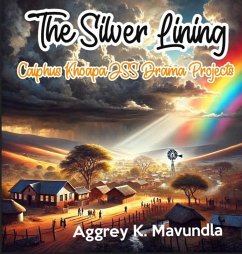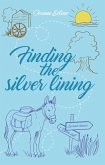In The Silver Lining, Lebo, a poor village girl, faces bullying and isolation due to her family's financial struggles and her mother's illness. The play addresses the emotional impact of being ostracized and highlights the importance of inner strength and perseverance. Her resilience is a testament to the strength needed to overcome adversity.
When the Going Gets Tough follows Jabu, a school girl caught in the crossfire of teenage romance and peer pressure. As she navigates her first love, she must balance her desire for personal relationships with the expectations of focusing on her education. The play examines the consequences of her actions and how external pressure can influence personal decisions. Through Jabu's experiences, the story emphasizes responsibility and the importance of making thoughtful, mature choices.
The third play, No Buts, follows Thandi and her friend Lerato as they venture into the world of parties, romantic relationships and risky behaviour. Their involvement in reckless activities results in unintended pregnancies, family conflicts and deep personal regrets. This play deals with consequences of impulsive decisions and highlights the significance of open communication between teenagers and their parents. It serves as a cautionary tale, underscoring the importance of self-control and learning from life's toughest lessons.
Overall, the book offers a rich portrayal of adolescent life in rural South Africa, emphasizing that no matter the challenges, there is always a silver lining, a lesson of hope, growth and resilience in the face of hardship. These relatable stories resonate deeply with young readers, helping them reflect on their own experiences while gaining valuable insights into personal growth.
The book is primarily intended for young adults and teenagers, as the stories address common struggles faced by this age group; such as peer pressure, relationships and personal responsibility. However, it is also a useful resource for educators and teachers, who can use the stories to initiate discussions on important social topics and integrate them into classroom activities. It provides teachers and drama instructors with a Drama Project Outline, which gives a step-by-step guideline on how to develop ideas, write your own original play and prepare it for staging; it covers fundamentals of the production process. An Assessment Rubric has been provided for evaluation purposes.
Parents and guardians will also find value in the book, as it offers a window into the emotional challenges their children might face and can help foster open conversations at home. It appeals to scholars as it provides a Comparative Analysis of the three stories. Drama and literature enthusiasts, who appreciate the creative storytelling and use of dramatic elements will also find solace in it; and it can serve as a resource for schools, churches, non-profit and youth organizations seeking to teach lessons of moral regeneration through drama.
Dieser Download kann aus rechtlichen Gründen nur mit Rechnungsadresse in A, B, CY, CZ, D, DK, EW, E, FIN, F, GR, H, IRL, I, LT, L, LR, M, NL, PL, P, R, S, SLO, SK ausgeliefert werden.









